TOBYHANNA ARMY DEPOT, Pa. - The Curran family's idea of fun involves getting soaked while traveling at speeds up to 60 mph.
Gene, Patty, Kevin and Molly have been sailing over log jumps and tearing around stationary buoys while competing in jet ski races since the 1990s. They've all claimed titles at national- and world-levels in individual categories.
Patty was hooked after watching her first race in 1994. Her husband Gene, a self-proclaimed adrenaline junkie, joined the racing circuit in 1997 after recovering from neck surgery. The children followed suit when they came of age-Molly started racing when she was 11 years old; Kevin, 13. Today the teens are freshmen at North Pocono High School and Bucknell University, respectively.
"It's a really cool family sport because everyone gets involved," Gene said, explaining that with most sports, unless you're a coach, you're not involved. "With jet skiing, parents can be more than just spectators," he said.
Sharing a common interest has brought the family closer together, improved their health and fed their competitive nature.
The family travels around the country competing against their peers in regional and national events, as well as the world finals in Lake Havasu City, Ariz. They race in the American Power Boat Association (APBA), an affiliate of the International Jet Sports Boating Association, which organizes and assists regional racing promoters in the United States, and regulates a variety of personal watercraft racing competitions.
The foursome admits to being fierce competitors on and off the water and although mom no longer competes, they still practice on the lake near the house. They coach each other on technique and work together to improve performance.
The Currans compete in Region 8, which covers territory from Maryland to Maine. They compete in a closed-course, riding the stand-up style jet ski. A closed course is a contest of speed and riding ability while negotiating multiple laps of a A,A1/2- or A,A3/4-mile course. Other types of courses include the slalom, freestyle, endurance and drag race.
Molly remembers spending her summers at jet ski races watching and cheering for her mom, dad and brother. Last year, she finished first in the world in the girl's junior category, ages 13-15.
"When I was about 9 years old I started to train, so as soon as I was legal to race, I could," she said. "I love the excitement and thrill of racing and the competition." Molly also snow skis, plays volleyball and soccer, and dances jazz and ballet. At school she is an honor-roll student, the class president and a member of the history and Red Cross clubs.
The entire family prefers the standup-style jet ski to the sit-down model because they feel it is more challenging to ride. The 130-horsepower, standup-style jet ski weighs about 300 pounds and can accelerate from 0-50 mph in three seconds, according to Gene.
"Personally, I think the standup models are much more fun," said Kevin, who also enjoys running, cycling, juggling and Alpine ski racing, but admits "the thrill of jet ski racing, especially at the national or world championships, is the best."
In addition to the thrill of the race, Patty realized that riding a jet ski was an excellent way to keep her family healthy. She explained that racing blends their love of the water with their spirit for competition to make exercising fun.
"It's a workout," said Patty, adding that she's usually totally spent after a race. "You're using every part of your body."
Gene likes the idea of staying fit as he grows older and plans to race as long as he's able. "This keeps me going physically," he said. "If I'm in bad shape, I'm likely to get hurt or get my butt kicked." Plus, everyone needs a hobby, he added.
As the team's mechanic, Gene also gets to use his skills as a mechanical engineer to come up with new designs and prototypes.
"I'm always doing goofy things that no one else has tried," he said. Gene works in the depot's Tactical Satellite Design and Support Division, Production Engineering Directorate.
Even at work, he's often the person depot officials seek out to tackle the unusual projects. During his 24 years here, Gene said he has been charged with "thinking outside the box" on a number of projects. Most recently, he worked with an electrical technician and five veterans to devise a plan to move an Air Force C-130 cargo aircraft from the Wyoming Valley Airport in Forty Fort to the depot. The 53-year-old fuselage was airlifted in two sections, suspended 130 feet below a CH-47 Chinook helicopter. The effort accomplished what some touted as one of the heaviest, and possibly the largest airframe lift by a CH-47 helicopter.
As the family dynamics continue to change, Patty and Gene hope they will continue to race together as long as possible.
Demanding schedules make it harder and harder every year, according to Patty, who is an industrial engineer assigned to the Productivity, Improvement and Innovation Directorate's Industrial Modernization Division.
"When I started, there weren't many women in the sport and the biggest challenge was finding time to practice when the children were little," she said. "It got harder and harder as they grew and developed interest in outside activities." Patty was ranked 12th in the world during 1999 and 2001.
Right now, Kevin's biggest obstacle is juggling college life and racing. He wasn't able to attend the world finals or nationals this year. At 17, Kevin already qualifies to race at the expert level.
Racing can be costly and time consuming, but having the family together is great, Patty said, noting that the children are teenagers and we enjoy spending time with one another.
"Racing pulls us together, keeps us strong," she said.
Molly recalls how her dad helped her during her first race. It was an ocean race and the waves were "huge," she explained. "I was so scared, because it was not only my first race, but my first time riding on waves," Molly said. "It was my dad's support at the starting line that gave me the confidence to ride a great race and place well."
Some of Kevin's most memorable moments are of practicing at home with the family, especially when his sister was first learning to ride.
Gene recommends people watch a race before deciding if jet ski racing is the right sport for them. Competitors can register fairly cheaply, he remarked, and if they have a jet ski and safety equipment they can compete in the APBA.
Riders are separated into classes based on the type of watercraft an individual owns and the modifications. Youth classes are broken down by age. Individuals 16 years old and older compete in the novice, amateur, expert and pro classes. Expert and pro competitors race for money, he added.
"I was in the novice and amateur classes until this year," Gene said. "I moved up after taking a national title." Gene has been ranked one of the top 10 racers in the world in his class.
Even after all these years, Gene said he still gets nervous at the starting line.
There are 18 other riders standing shoulder to shoulder when the flag drops, he explained. Then, everyone is jockeying for first place traveling at about 50-60 mph toward the first buoy, he said. "It's the most nerve-racking, thrilling part of the race," Gene said. "After all the races I've competed in, I still get shaky at the starting line...it makes me feel really alive."
"There is no other thrill like going into the first turn at 50 mph only inches from other riders," Kevin said.
The 2008 racing season runs from May to September and as soon as the weather turns warmer, the Currans will begin training for another year on the water.

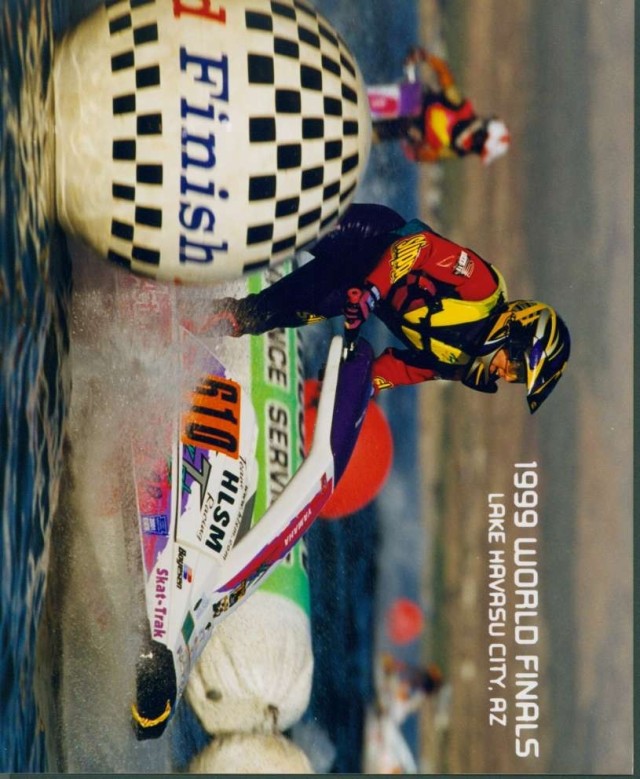
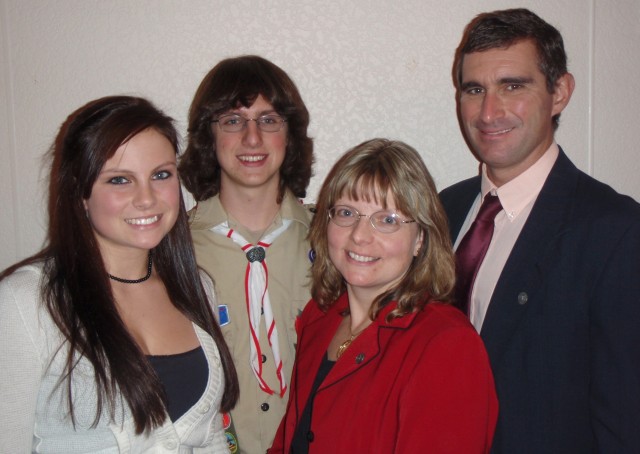
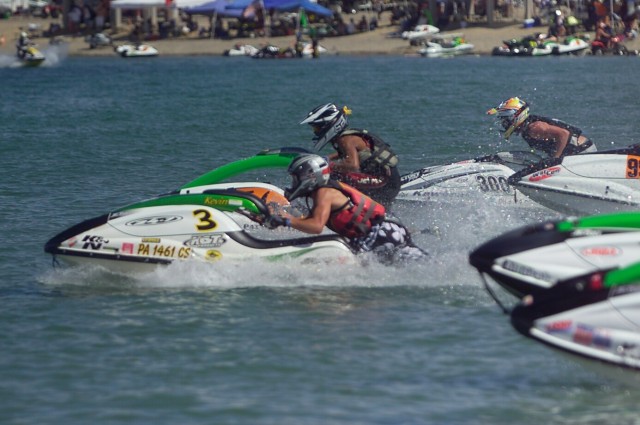
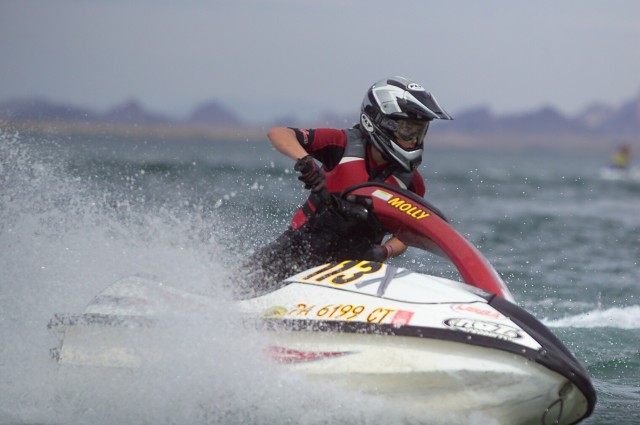

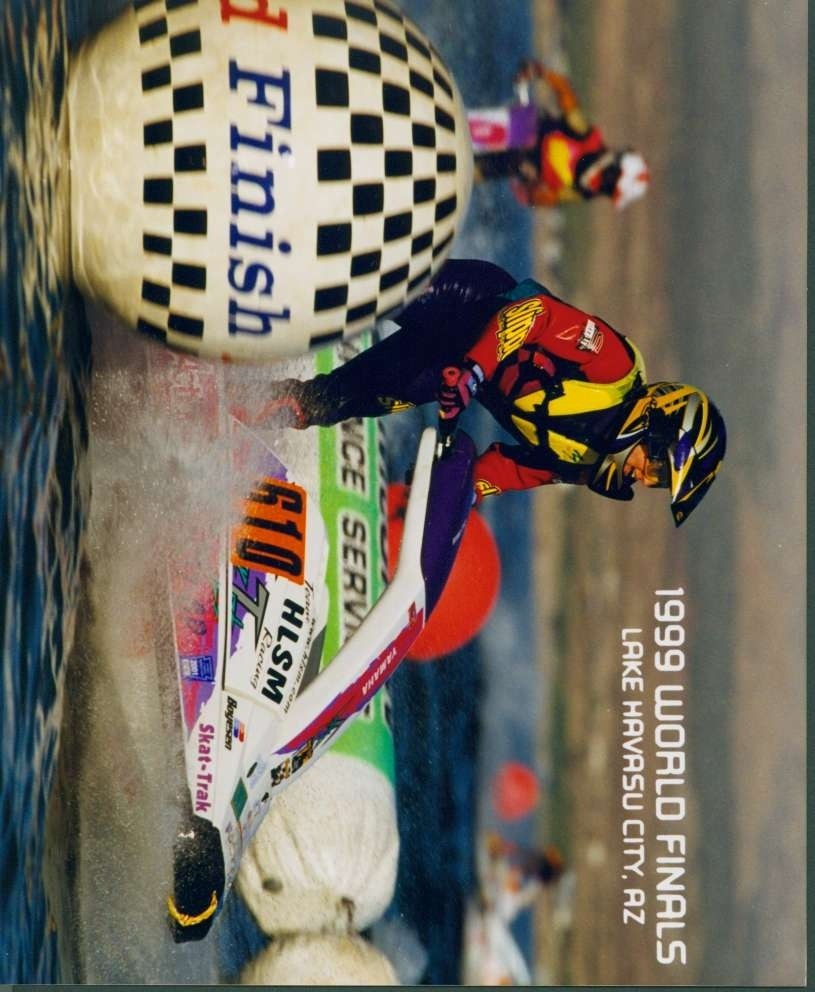



Social Sharing